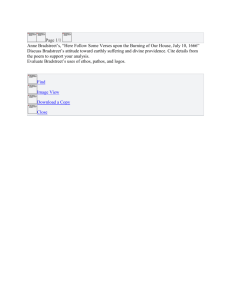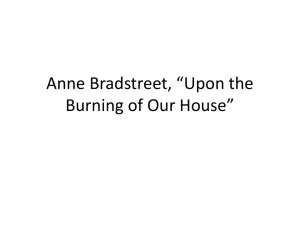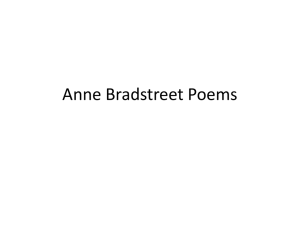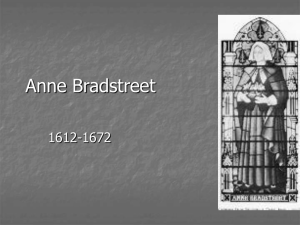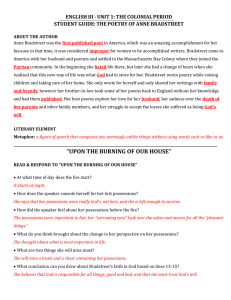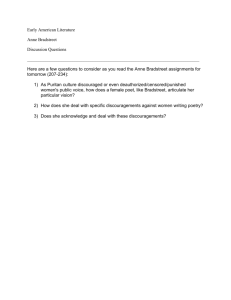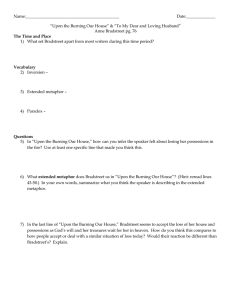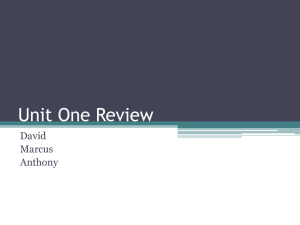anne_bradstreet_poetry
advertisement
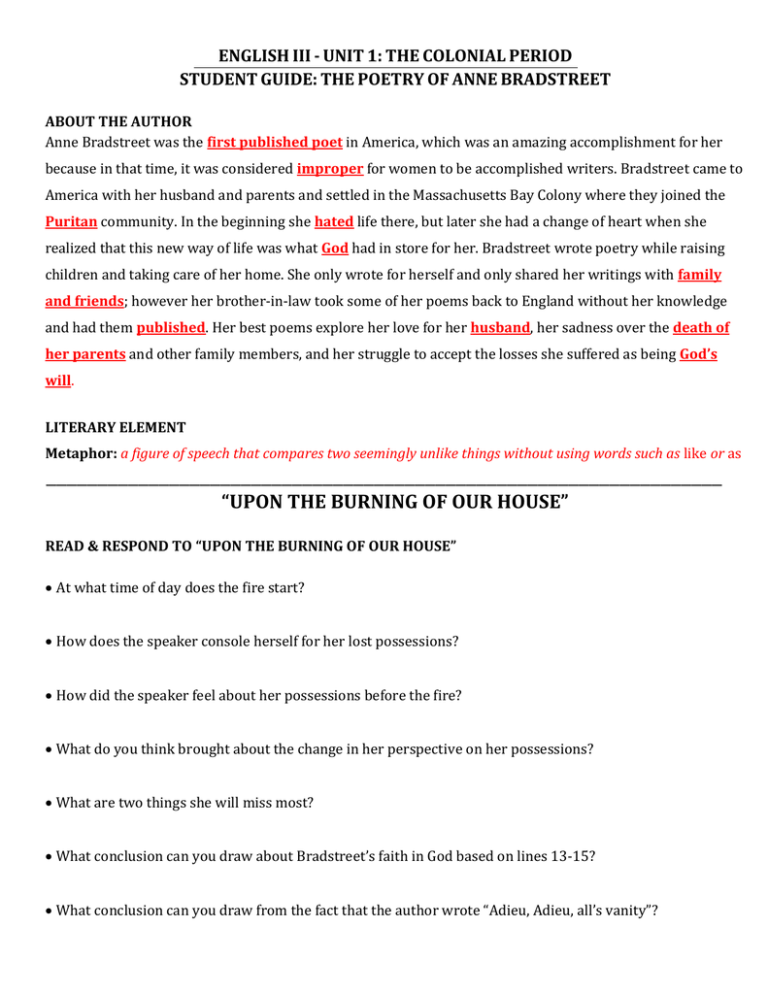
ENGLISH III - UNIT 1: THE COLONIAL PERIOD STUDENT GUIDE: THE POETRY OF ANNE BRADSTREET ABOUT THE AUTHOR Anne Bradstreet was the first published poet in America, which was an amazing accomplishment for her because in that time, it was considered improper for women to be accomplished writers. Bradstreet came to America with her husband and parents and settled in the Massachusetts Bay Colony where they joined the Puritan community. In the beginning she hated life there, but later she had a change of heart when she realized that this new way of life was what God had in store for her. Bradstreet wrote poetry while raising children and taking care of her home. She only wrote for herself and only shared her writings with family and friends; however her brother-in-law took some of her poems back to England without her knowledge and had them published. Her best poems explore her love for her husband, her sadness over the death of her parents and other family members, and her struggle to accept the losses she suffered as being God’s will. LITERARY ELEMENT Metaphor: a figure of speech that compares two seemingly unlike things without using words such as like or as ____________________________________________________________________________________________________________________________________ “UPON THE BURNING OF OUR HOUSE” READ & RESPOND TO “UPON THE BURNING OF OUR HOUSE” At what time of day does the fire start? How does the speaker console herself for her lost possessions? How did the speaker feel about her possessions before the fire? What do you think brought about the change in her perspective on her possessions? What are two things she will miss most? What conclusion can you draw about Bradstreet’s faith in God based on lines 13-15? What conclusion can you draw from the fact that the author wrote “Adieu, Adieu, all’s vanity”? In the final line, where does the speaker say her “hope and treasure” are? What does this suggest about the speaker’s home and possessions? What evidence does the poem provide to support the assertion that Bradstreet was a religious woman? Cite all examples from the poem that you can find. What effect do Bradstreet’s frequent references to her faith have on the poem’s meaning? LITERARY ELEMENT: METAPHOR (Line 3) What metaphor does Bradstreet use in line 3? What effect does the use of the metaphor have? (Line 34) How does the poem change after line 34? What important metaphor appears after the transition? (Lines 43-44) Who is the “mighty Architect” in this metaphor? (Lines 43-50) Lines 43-50 contain an extended metaphor. In your own words, summarize what you think the speaker is describing in the metaphor. “TO MY DEAR AND LOVING HUSBAND” READ & RESPOND TO “TO MY DEAR AND LOVING HUSBAND” The speaker says she prizes her husband’s love more than two things. What are they? What does she wish for after death? How does Bradstreet’s description of her love for her husband reflect her religious beliefs in lines 9-10? What is the seeming contradiction in the last line of the poem? What do you think this line means? ____________________________________________________________________________________________________________________________________ CONNECT TO THE BIG IDEA: LIFE IN THE NEW WORLD How do Bradstreet’s Puritan beliefs affect her perception of the world as represented by these poems?
